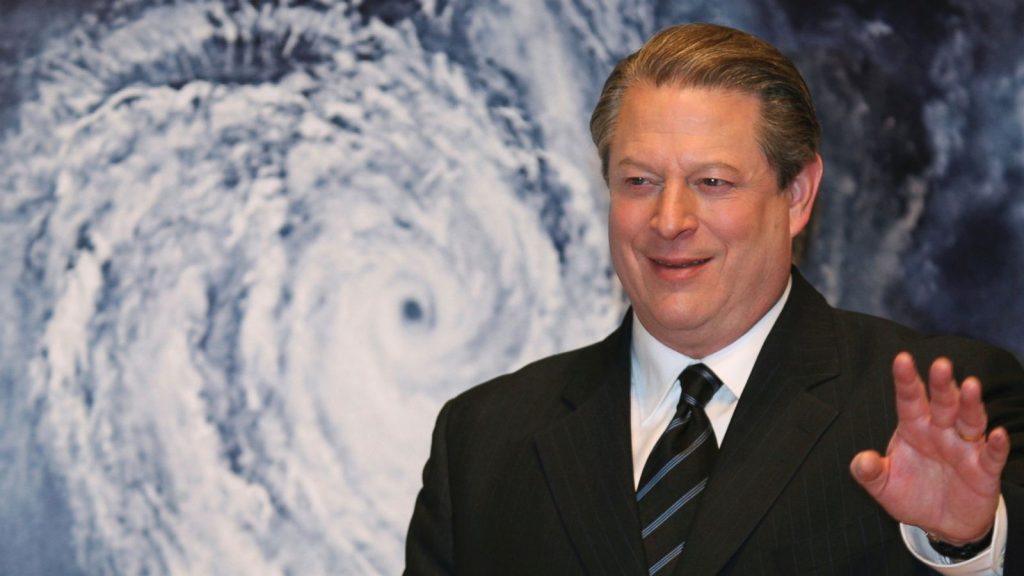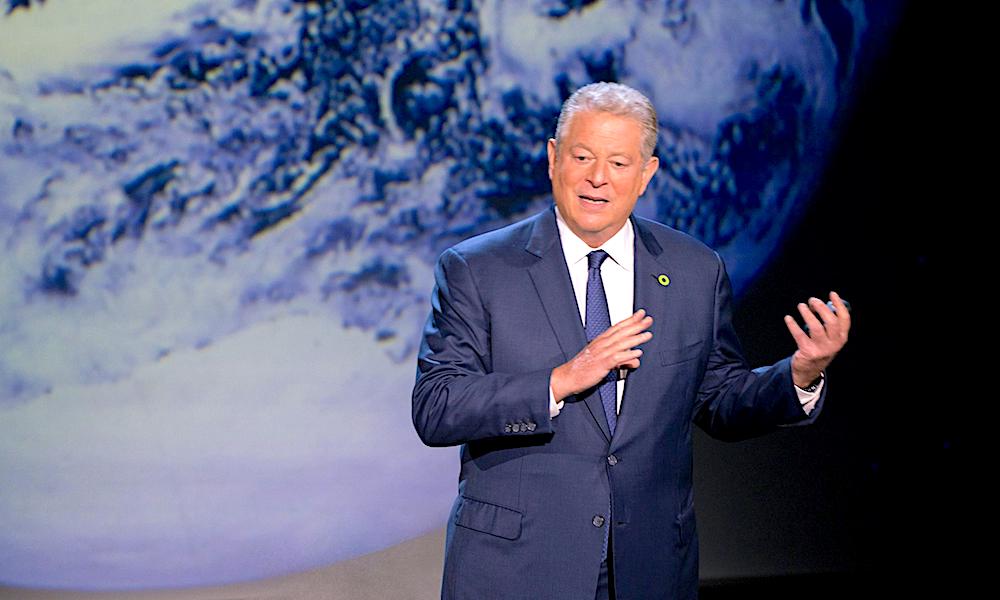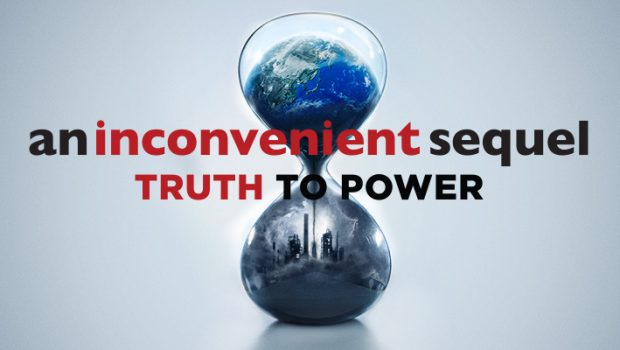An Inconvenient Sequel: Truth to Power – Film Review
Reviewed by Damien Straker on the 26th of July 2017
Paramount Pictures presents a film by Bonni Cohen and Jon Shenk
Produced by Jeff Skoll, Richard Berge and Diane Weyermann
Starring Al Gore
Music by Jeff Beal
Cinematography Jon Shenk
Edited by Don Bernier and Colin Nusbaum
Running Time: 98 minutes
Rating: PG
Release Date: the 10th of August 2017
Climate change is real and one of the most pressing issues upon which the world must immediately act. It is an environmental, technological and economic challenge, where strong world leadership will result in countries utilising renewable energy to protect the planetary environment from archaic and dangerous industrial practices, such as coal burning and fossil fuels, and create new and sustainable employment opportunities.
The many complex facets of climate change are stressed in An Inconvenient Sequel: Truth to Power, the sequel to Al Gore’s Oscar-winning documentary An Inconvenient Truth (2006). While the film is worth watching because of the validity and importance of its subject matter and its message, this follow-up is not of the same calibre as the first movie as it doesn’t share the same tight narrative structure.
In the original, Al Gore was filmed before an audience giving his now famous PowerPoint presentation on climate change, which provided the movie with a scientific, factual outline that was accessible, interesting and informative. Here he argues rightfully that the conditions and global natural disasters have worsened in the last ten years, citing the frequency of warmer days as an example of the latest environmental deterioration.
Sequel though by its very name is a follow-up movie and cannot repeat what has come before it. Instead, it is looser and more anecdotal in its narrative form and therefore less direct. It has some footage of Al Gore giving his trademark presentation and similar types of graphics and charts, outlining statistics and patterns, are again utilised. Yet it’s also concerned with evoking a broader message of remaining optimistic, being active in the cause and the possibility of change, as opposed to being entirely academic in its voice and information.
The movie’s form is comprised of various fragments where we see Al Gore backstage at press conferences, talking to officials in various American cities, spending time in the Arctic investigating the glaciers, at home at his family ranch, and even helping to muster deals at the 2015 Paris Agreement. From that list alone, its apparent that the shape, timeline and focus of this film makes for an untidy companion to its predecessor.
However, there’s no doubting Al Gore’s sincerity and the serious to which he approaches this subject. For all its structural problems and loose editing, Sequel is still a documentary with a palatable viewpoint and it does allow Gore to continue to raise useful and meaningful points on this highly important subject matter—he concedes that he realised that cinema was one of the most powerful platforms for conveying a message.

Early in the film, he savages democracy in America for being corrupted by political financing. This is a pivotal observation that has had a distressing impact on government, where politicians are deterred from addressing issues such as climate change because they are funded, bribed, by powerful lobbying group. Furthermore, he slams America’s abandonment of its world leadership role, even comparing the country unfavourably to China!
Sequel also dramatises into concerns through some striking visuals. There’s strong footage of the glaciers themselves courtesy of several aerial shots and the overhead photography that provides the film with lasting cinematic credentials. As Al Gore’s plane flies across the icy landscapes, we can see the extent to which the ice has melted away over a short period of time. The result we’re told is that the melted ice filters into the ocean and consequently results in higher sea levels and dangerous flooding.
Many of the film’s episodes that follow are also surprisingly funny. There’s one darkly humorous anecdote where Al Gore recalls that the most heavily criticised scene in the original film was the one where he warned that the National September 11 Memorial was at risk of being flooded from rising sea levels.

The film then cuts to footage from 2011 where the memorial was as predicted heavily flooded and the event was bad enough that it was reported on the nightly news! The moment results in being a brutal and funny takedown of naysayers hiding from scientific fact behind false patriotism.
Another quietly funny episode sees him talking to local government officials in Miami. He’s late to a conference because he’s interested in observing the flood damage and the rising water. The officials say they have taken the liberty of putting in barriers to stop the water; however, we know these are merely band-aid solutions to the broader problems. The sequence continues: Gore later hangs up his wet socks and then tells an audience that his boots weren’t quite high enough to escape the rising water.
Unfortunately, the film’s pacing drags towards the end with a long and slightly confusing look at India during the Paris Climate Change Conference in 2015, where Gore apparently played a major role in helping to break a deal so that India could invest in renewable energy. This typifies one of the film’s narrative lines that change is possible and that Gore is genuinely feeling positive about the future, particularly from the number of volunteers he has acquired since his first documentary.
His optimism is a counterpoint to the adversity he has continually experienced, specifically his defeat by George W. Bush for the presidential election of 2000. On adversity, he states that everyone has a plan in life until you get punched in the face. Consequently, maybe he felt he needed to express a highly liberal sense of optimism and self-belief in this film when America, and the rest of the world, is facing such terrible resistance from its current administration that is sadly disinterested in addressing climate change through industry reform; it is now actively working to suppress facts and knowledge on the subject by undermining scientific development. That isn’t a punch in the face—it’s a gunshot wound to the heart. A small film like this might go a little way to keeping the issue in the public eye and the discussion alive.
Climate Change Presentation:
Download a copy of the Truth in 10 slideshow here: https://www.
Facebook: AnInconvenientTruth/
Instagram: @aninconvenienttruth
Summary: While the film is worth watching because of the validity and importance of its subject matter and its message, this follow-up is not of the same calibre as the first movie as it doesn’t share the same tight narrative structure.







